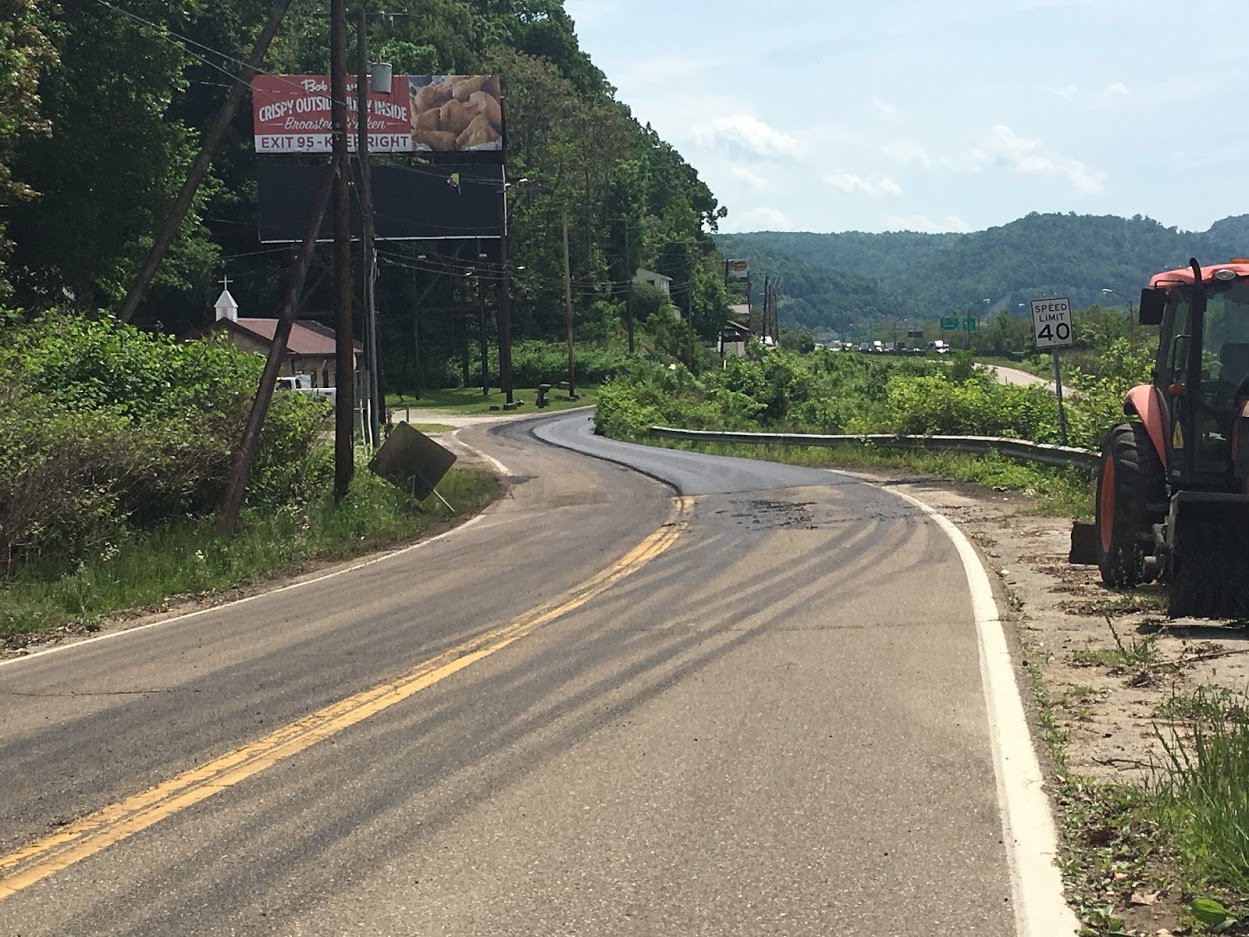- Fall 2020
Tracking of Tack Coats
The most notable aspects of a recently completed paving project should be a smooth ride and a great appearance, not a trail of tracked tack material leading all the way back to the asphalt plant. In addition to making surrounding projects look terrible, tracked tack can create a potential safety problem if the material builds up at an intersection and reduces pavement friction. Most importantly, tracking removes tack material from the pavement, jeopardizing the bond between asphalt layers. Proper bonding is critical to the life of a pavement; one study showed that interface bond strength between pavement layers could be reduced by up to 70% if only 50% of the surface was tacked or if there was a loss of tack material caused by tracking. Understanding the specific cause(s) of tracking on a project is key to preventing this issue. In general, three types of tracking commonly occur on paving projects: unbroken and/or uncured asphalt emulsion, softness of residual asphalt binder, and dirt on the underlying surface.
Tracking of Unbroken/Uncured Asphalt Emulsion
The most common cause of tracking is construction vehicles driving over an unbroken and/or uncured asphalt emulsion. An asphalt emulsion is a combination of microscopic-sized asphalt binder, water and an emulsifying agent, which allows the material to remain liquid and be applied at relatively lower temperatures (70 - 160°F). After applying the emulsion to the pavement surface, a chemical change occurs in the emulsifying agent causing the asphalt and water to physically separate into two distinct phases. At this point, the emulsion begins to “set” or “break,” which means the microscopic-sized asphalt particles begin to flocculate into small clumps and then coalesce together. As this happens, the emulsion color changes from brown to black.
When all of the water has evaporated, the emulsion is considered to be “cured” and ready for paving. Curing is essential, as this is the point when the mechanical properties of the asphalt binder essentially reform. Once the emulsion has fully cured, the residual asphalt will then properly bond to the layer below it and the next layer can be paved. Although emulsions are very popular and widely used, the time it takes for them to properly break and cure is a drawback, delaying paving operations and creating the potential for tracking if the emulsion is paved over before it has properly broken and cured. Emulsions require more time to break and cure when air and pavement temperatures are cooler and humidity levels are higher (such as night paving).
Several options are available to mitigate this type of tracking: 1) allow adequate time for the material to properly break and cure prior to driving over it or paving; 2) use a hot-applied product, either straight asphalt binder or a hot-applied trackless product; 3) use a “trackless” tack product that has shorter break and set times; 4) ensure that the application rate is correct and the emulsion is not diluted; or 5) use a spray paver.
Residual Asphalt Binder Too Soft
Another common type of tracking occurs after the asphalt emulsion has fully broken and cured, yet the residual asphalt binder still sticks to the tires of construction vehicles that drive over it. This is likely due to the residual asphalt of the emulsion being too soft for the temperatures at the paving site. In general, stiffer binders are less likely to track in hot weather than softer binders. High air and pavement temperatures are the most important factors affecting this type of tracking behavior. Tracking of this nature can also occur when straight asphalt binders are used for tack coats. For example, if a PG 52-22 binder was used for tack on a daytime project in the middle of summer in south Texas, it would likely be too soft and track during construction.
The most common methods used to resolve this type of tracking include: 1) use a reduced-tracking emulsion which has a harder residual binder; 2) use a hot-applied product, either straight asphalt binder or a hot-applied trackless product (making sure that the high temperature PG grade is adequate for the environment); or 3) use a spray paver.
Underlying Surface is Dirty or Dusty
Another cause of tracking is an underlying surface that is dirty or dusty. In these situations, the tack coat material sticks to the dust/dirt, not to the underlying pavement surface. Any vehicular traffic that drives on the pavement will then pick up the tack material simply because it isn’t properly bonded to the underlying surface.
Properly cleaning the pavement surface prior to applying tack will minimize this type of tracking. Cleaning can be accomplished by mechanical brooming, flushing the surface with water, blowing off debris using high-pressure air, or a combination of these. Allowing traffic on the underlying surface (if feasible) is another method of assuring that the surface is adequately cleaned.
Tracking of tack coat materials must continually be addressed, as it can be a major problem in terms of performance, safety and aesthetics. Properly identifying the cause of tracking is key to finding potential solutions.

For more information about this article, please contact Jim Musselman.
